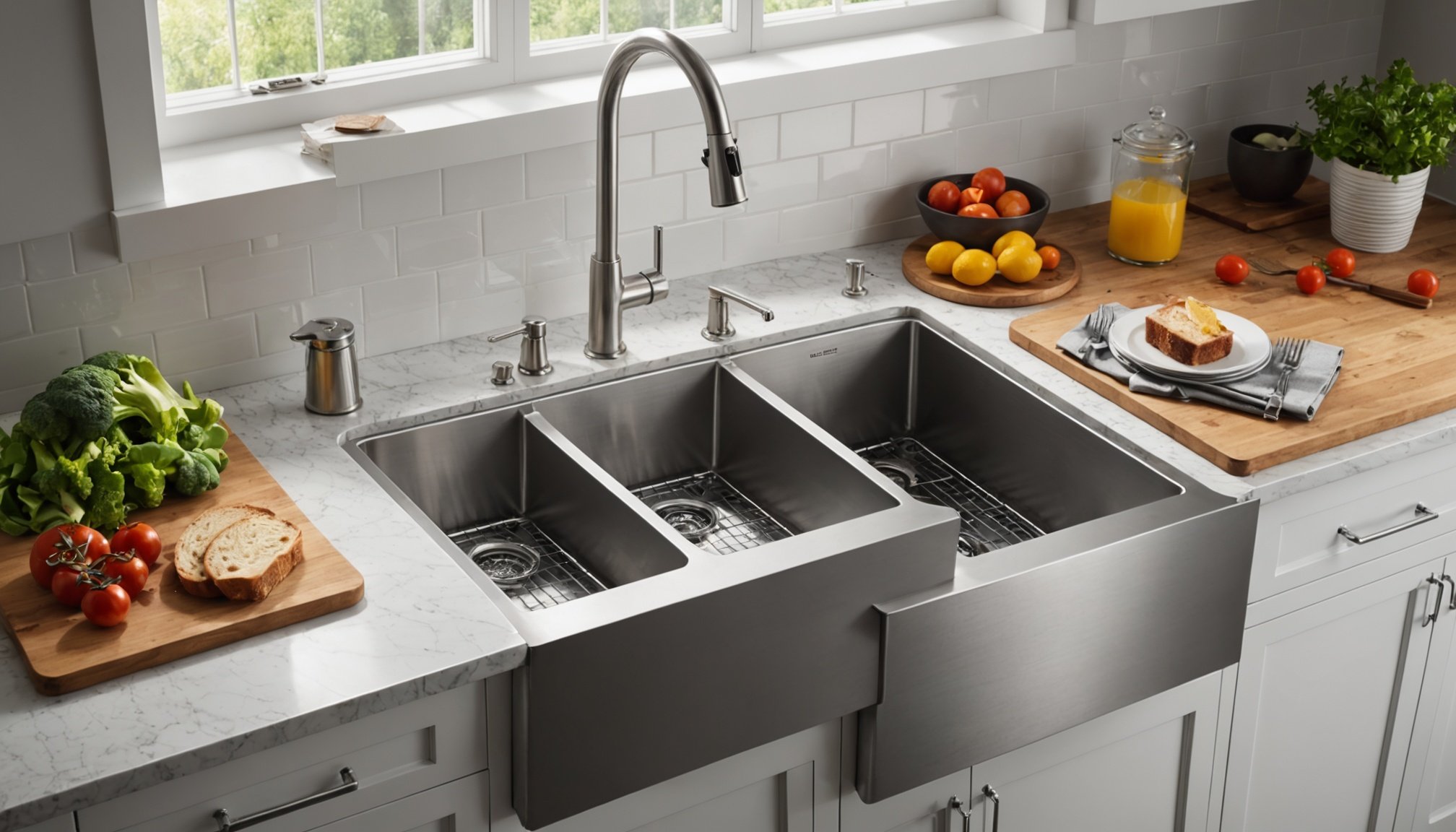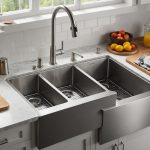Choosing the right kitchen sink style can significantly enhance both the functionality and design of your kitchen. The sink is often the focal point of the kitchen, and its style can complement your overall space while reflecting your personal taste. Whether you are a casual cook or a culinary enthusiast, the sink must meet your daily needs. This guide will help you navigate the various options available, ensuring you select a sink that aligns with your cooking habits and lifestyle.
Understanding Your Cooking Habits
Before diving into the specifics of sink styles, it is crucial to assess your cooking habits. Are you someone who cooks daily or only on special occasions? Do you often entertain guests, requiring you to clean multiple pots and pans at once? Understanding these habits will guide you toward a sink that not only looks great but also enhances your kitchen’s functionality.
This might interest you : What are the best resources for learning advanced cooking techniques at home?
Consider the types of meals you prepare regularly. If you often cook large meals, a larger sink with multiple bowls may be beneficial. Two-bowl sinks allow for multitasking; one side can be used for washing vegetables or soaking dishes, while the other can be reserved for rinsing or drying. On the contrary, if you typically prepare quick meals, a single-bowl sink might suffice, providing ample space for your basic washing needs.
The size of your kitchen also plays a significant role. A compact kitchen might benefit from a smaller sink, while a spacious area could accommodate a large stainless steel sink. Assess your countertop size and layout to ensure your sink complements the available space.
Also to read : How can I maintain a kitchen garden for fresh herbs and vegetables year-round?
At this stage, you can begin to visualize how your sink will integrate into your daily routine. By keeping your cooking habits at the forefront, you can eliminate options that do not align with your lifestyle, making your selection process more efficient.
Materials Matter: Stainless Steel vs. Other Options
The material of your kitchen sink is a critical consideration that affects both its design and functionality. While there are various materials available, stainless steel is a popular choice for many kitchens due to its durability and sleek appearance. Stainless steel sinks are resistant to rust and corrosion, making them ideal for heavy use.
When choosing a stainless steel sink, consider the gauge of the steel. A lower gauge signifies thicker steel, which can resist dents and noise better than thinner options. This is particularly important if you wash pots and pans frequently, as thicker materials provide a more robust experience.
However, stainless steel is not your only option. There are also composite sinks made from materials like granite or quartz, which offer a unique aesthetic. These sinks can come in various colors and finishes, allowing you to customize your kitchen style. Additionally, composite sinks are known for their resistance to scratches and stains, which can be a significant advantage for busy households.
Another option is porcelain sinks, which can add a classic touch to your kitchen. They are available in various colors and designs but may require more maintenance to keep them looking pristine.
Ultimately, the choice of material should align with your cooking habits. If you prioritize ease of cleaning and durability, a stainless steel sink is likely your best bet. However, if you lean towards a specific aesthetic, composite or porcelain options may better suit your design preferences.
Understanding Sink Styles – Undermount vs. Top-Mount
When selecting a kitchen sink, understanding the different installation styles is essential. The two most common types are undermount and top-mount sinks. Each style has its unique characteristics that can influence your decision based on personal preferences and kitchen layout.
Undermount sinks are installed beneath the countertop, providing a seamless look that can enhance the overall aesthetic of your kitchen. This style is particularly beneficial for those who prioritize easy cleaning, as there are no edges or seams to trap dirt and debris. If you often cook messy meals or entertain guests, the convenient cleanup of an undermount sink can be invaluable. Additionally, they create a sleek, modern appearance that can elevate your kitchen’s design.
On the other hand, top-mount sinks are installed on top of the countertop. This style is often easier to install, making it a popular choice for DIY enthusiasts or those looking for a more budget-friendly option. While top-mount sinks may not offer the same seamless look as undermount styles, they come in various designs and finishes, allowing you to personalize your kitchen space.
When considering sink styles, think about your cooking habits. If you need a sink that can handle heavy use while remaining easy to clean, an undermount sink may be the right choice. However, if you’re looking for an affordable and easily installable option, a top-mount sink could serve you well. Ultimately, the best sink style will complement your kitchen’s design while addressing your daily cooking needs.
Faucet Selection: Completing Your Sink Setup
Once you have settled on the sink style and material, the next step is selecting the right faucet. The faucet is an integral part of your kitchen setup, enhancing both the functionality and style of your sink area. With various designs and features available, picking the right faucet requires careful consideration.
Start by assessing your typical kitchen tasks. If you often fill large pots with water, a pulldown or pullout faucet might be ideal, allowing you to easily direct water where you need it. These faucets typically offer a high arc design, giving you additional clearance for filling taller items.
You will also want to consider the faucet’s finish. Options range from shiny chrome to matte black and even brushed nickel. The color and finish should complement your sink and overall kitchen design. Remember that certain finishes may require more maintenance than others to keep them looking their best.
Additionally, consider the number of holes in your countertop. Some faucets require one hole for installation, while others may need two or more for additional features such as soap dispensers or side sprayers. Ensuring your faucet matches your sink’s requirements will save you from potential installation headaches.
Finally, think about the functionality you desire. Some modern faucets offer touchless technology, which can enhance convenience, especially when your hands are full or dirty. By evaluating your daily cooking routines and preferences, you can select a faucet that enhances your kitchen’s functionality and complements your sink style.
In conclusion, choosing the right kitchen sink style involves evaluating your cooking habits, understanding materials and styles, and selecting the perfect faucet to complete your setup. By considering factors such as size, functionality, and design, you can find a sink that not only serves your needs but also enhances the overall aesthetic of your kitchen. Remember that your sink is a crucial part of your cooking experience; investing the time to choose wisely will pay off in convenience and satisfaction for years to come. As you embark on this journey, keep your unique cooking lifestyle in mind, and don’t hesitate to explore various options to find the perfect match.











